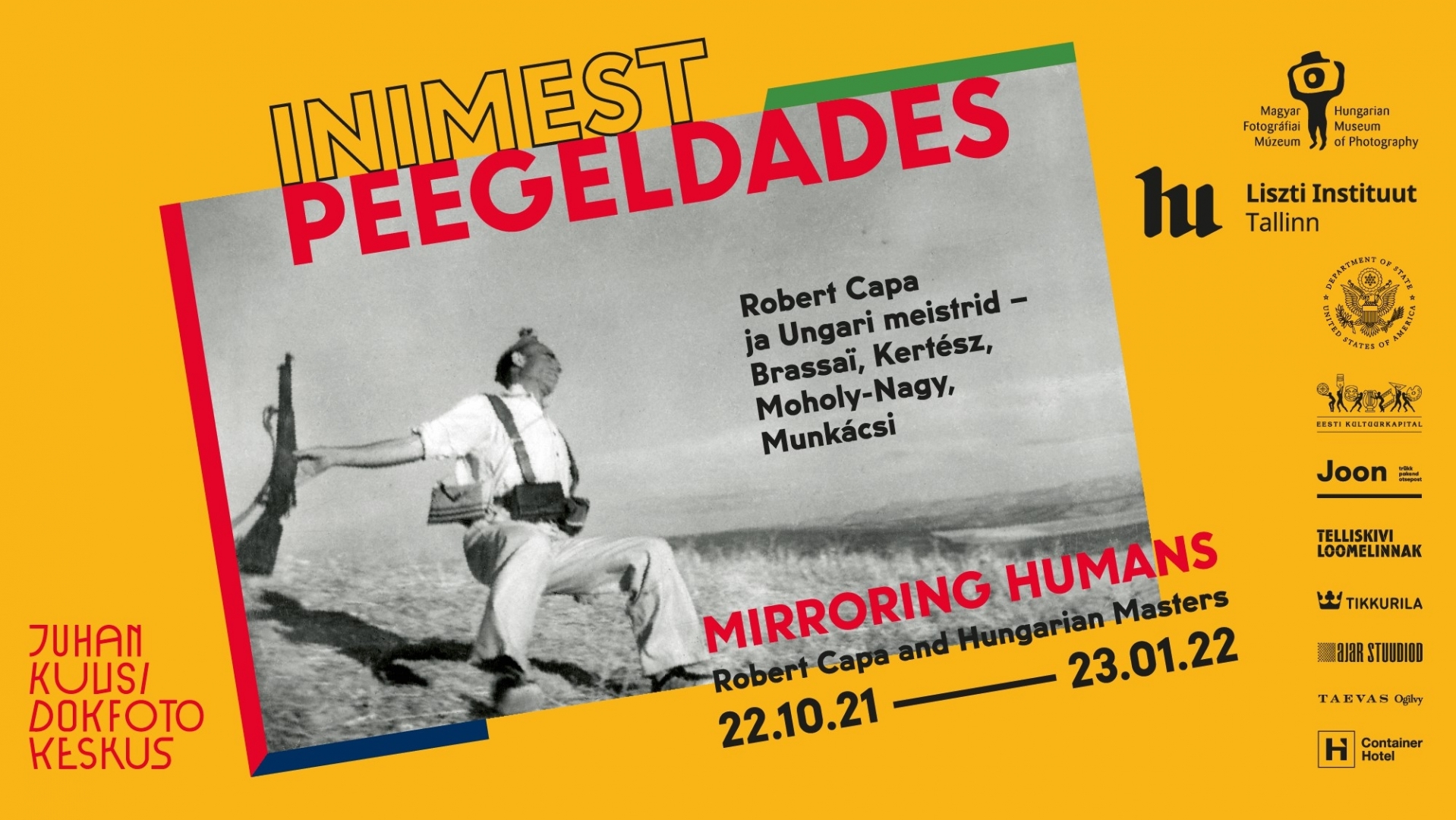In cooperation with the Liszt Institute - Hungarian Cultural Center Tallinn, we are presenting for the first time in Estonia the exhibition of five legendary photographers from the collection of the Hungarian Museum of Photography. The exhibition "Reflecting People - Robert Capa and Hungarian Masters - Brassaï, Kertész, Moholy-Nagy, Munkácsi" is open at the Juhan Kuus Documentary Photo Centre.
“It’s not enough to have talent, you also have to be Hungarian.”. These are the words of Robert Capa, the most famous Hungarian photographer. Although the photo legend said these words partly as a joke, there is some truth behind it. Especially when we talk about photography in the first half of the twentieth century. The selection of “The World’s Hundred Best Photographs”, published already in 1931 by British magazine Modern Photography, included eight names from Hungary, more than from any other nation.
The largest part of the works on display at the Juhan Kuus Documentary Photo Centre are from the co-founder of the legendary Magnum photo agency Robert Capa (1913–1954). One of the reasons behind this is the fact that Robert Capa was one of the most important role models for Juhan Kuus, who named our Photo Centre. Juhan kept repeating Capa’s most famous quote: “If your pictures aren’t good enough, you aren’t close enough.”. It is valid to say that Capa not only reformed war and conflict photojournalism, but he outright created it.
Capa’s straightforward style of modern photojournalism is balanced by four other authors at the exhibition. Brassaï (1899–1984) became the best-known photographer of the night culture in the French metropolis in the 1930s, capturing the nightlife of Paris. He could often be seen in cafes and their seedy back rooms, but also photographing night lights and empty streets. André Kertész (1894–1985), in contrast to Brassaï, photographed Paris in daylight. He was the greatest poet among the Hungarian photographers. He captured unforgettable and intimate images of lovers, ordinary people and outcasts, but also managed to capture the dynamics of moving crowds.
Moholy-Nagy (1895–1946) is renowned as much as a designer as a photographer. He was the most theoretically oriented visionary and photographically experimental author of the five Hungarian masters. Therefore it is no surprise that he is also considered a pioneer of new media, who founded a design school in Chicago. The University of Art and Design (MOME) in Hungary carries his name.
It is remarkable that all five photographers arrived in the United States at some point in their lives. Martin Munkácsi (1898–1963), the first one of them to land in the The Land of Opportunity, was a former sports photographer whose creative and innovative style found its audience in the famous fashion magazine Harper’s Bazaar. Few know that Henri Cartier-Bresson got the idea for his famous Decisive Moment style from Munkácsi. “In 1932, I saw a photo of three black boys by Martin Munkácsi /…/ and suddenly made me realize that a photography could reach eternity through the moment,” said Cartier-Bresson.
With the exhibition opened at the Documentary Photo Centre we aim to give a glimpse into the Hungarian photographic phenomenon and to make our photographic circles think about what could bring Estonian photographers to spotlight at the competitive arenas of the world photography, as it happened in the first half of the last century with our kindred people from Hungary.
The exhibition is accompanied by an educational and entertaining audience program. For more information, please follow the homepage of Juhan Kuus Documentary Photography Centre.
Curators of the exhibition: Kristel Laur and Toomas Järvet, Juhan Kuus Documentary Photo Centre
Exhibition commissioner: Péter Baki, Hungarian Museum of Photography
Supporters of the exhibition: Liszt Institute – Hungarian Cultural Center Tallinn, Embassy of the United States in Tallinn, Estonian Cultural Endowment, Taevas Ogilvy, Joon, Ajar Studios, Tikkurila, Telliskivi Creative City, Hektor Container Hotel
